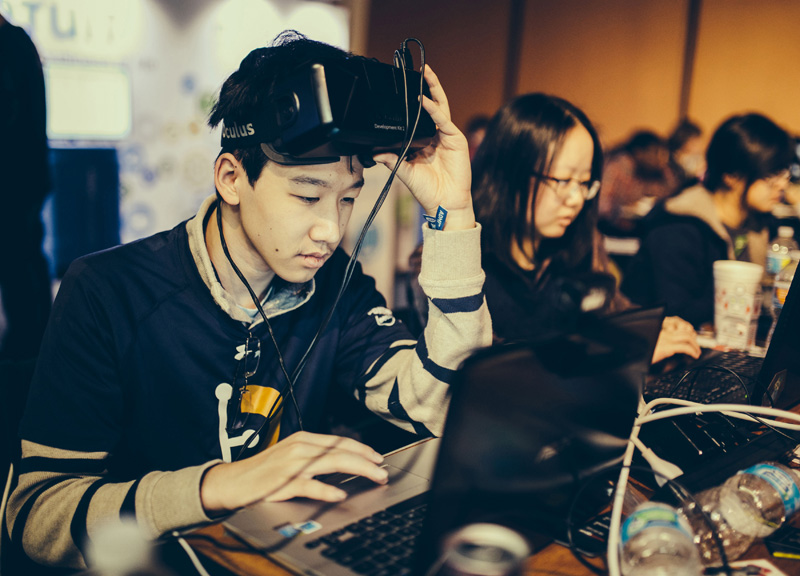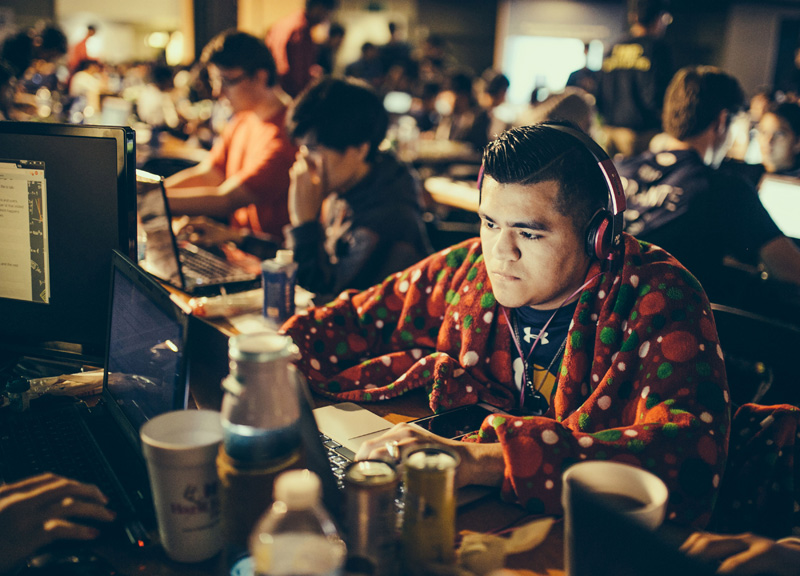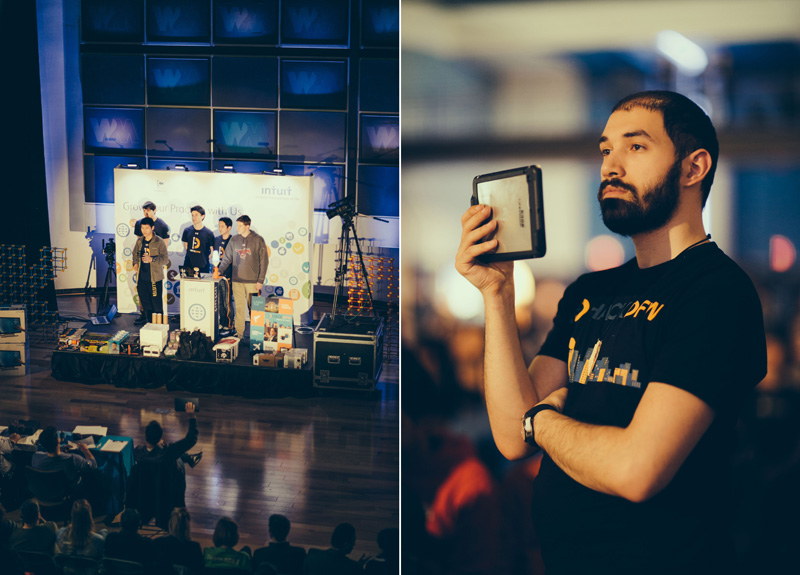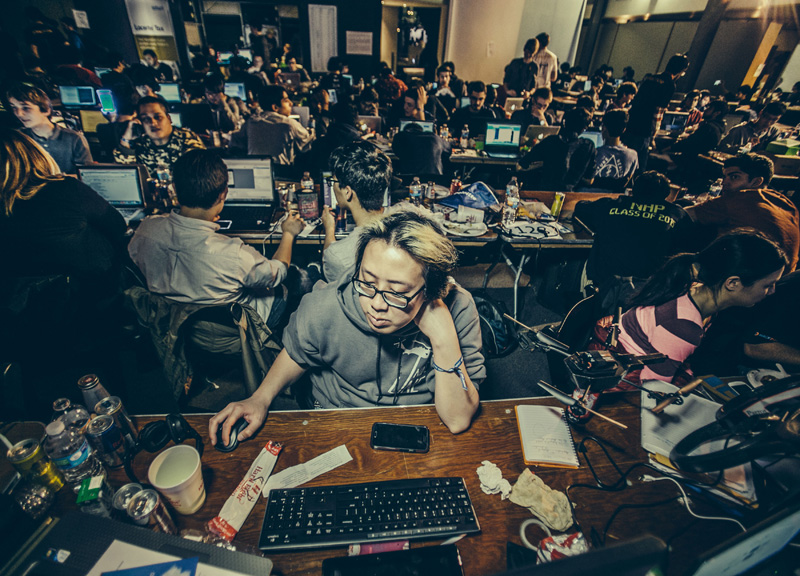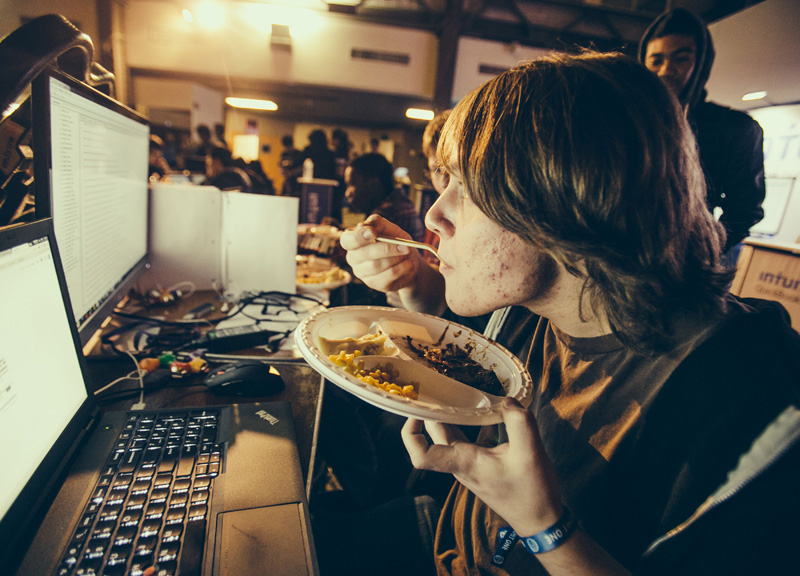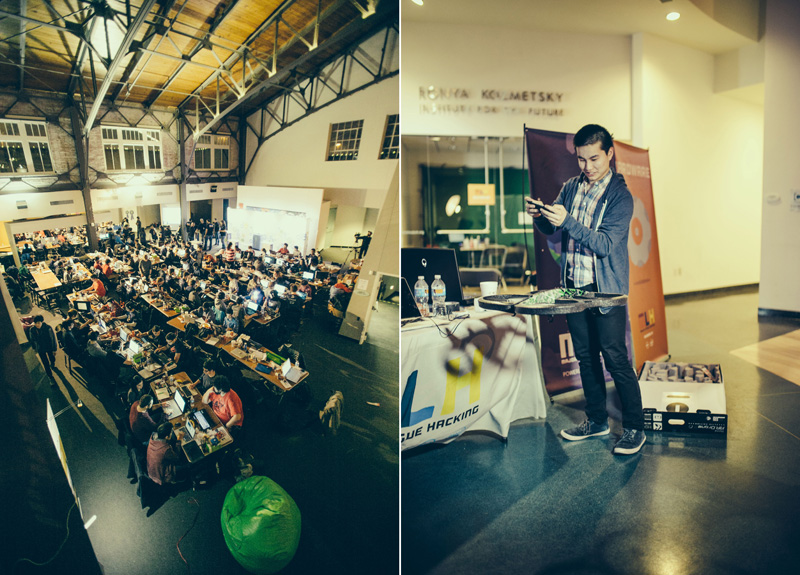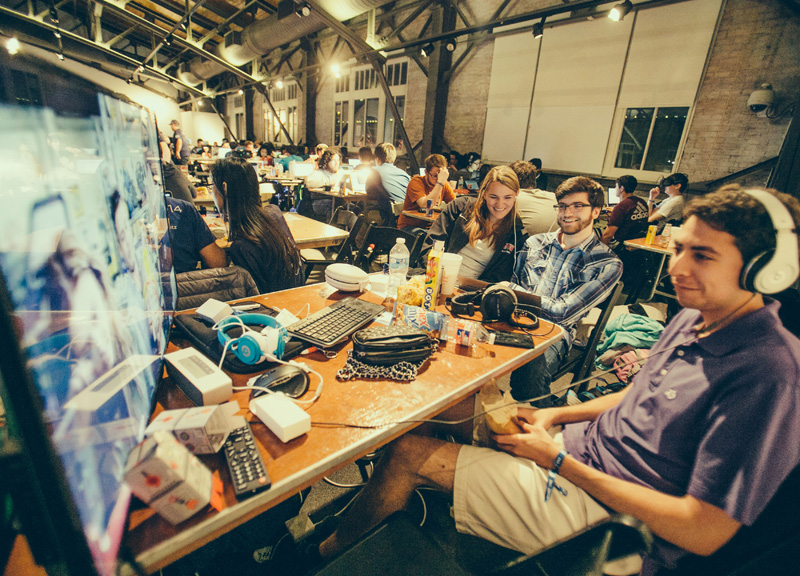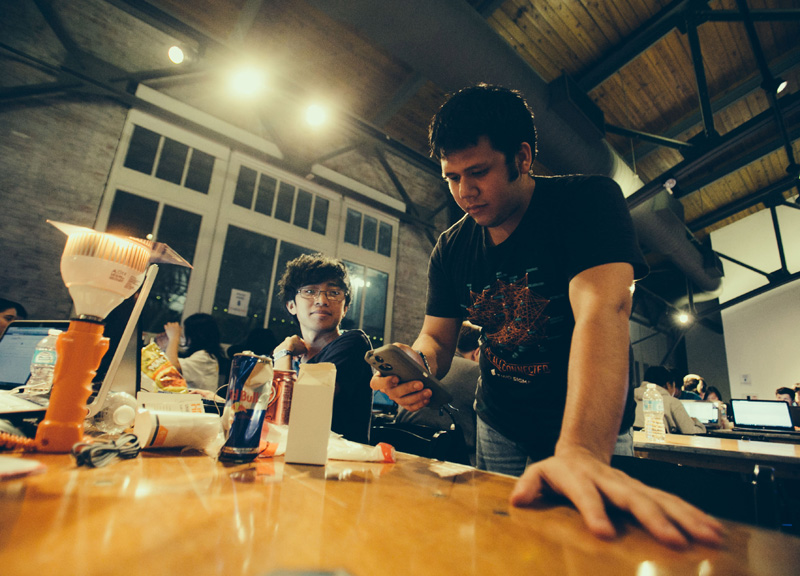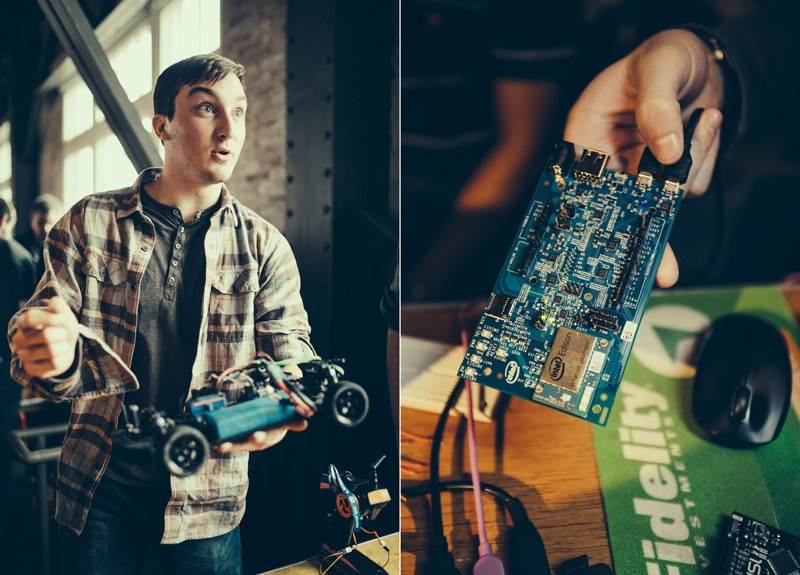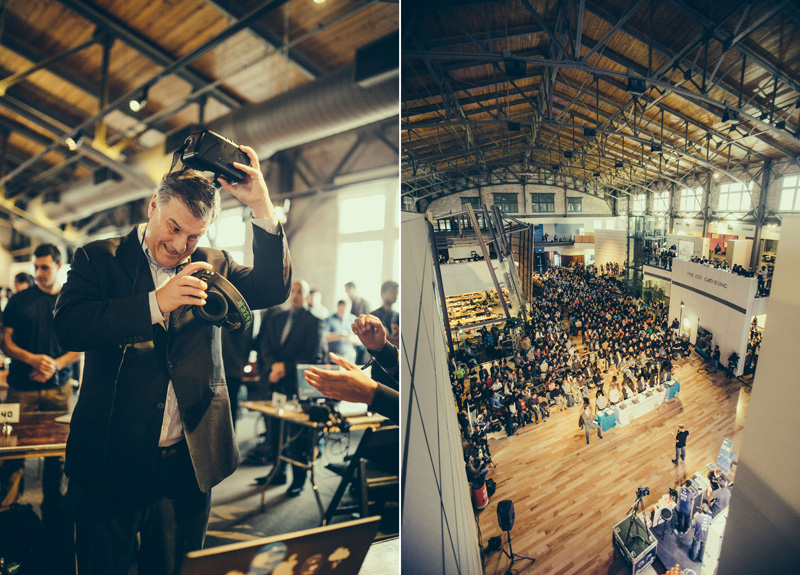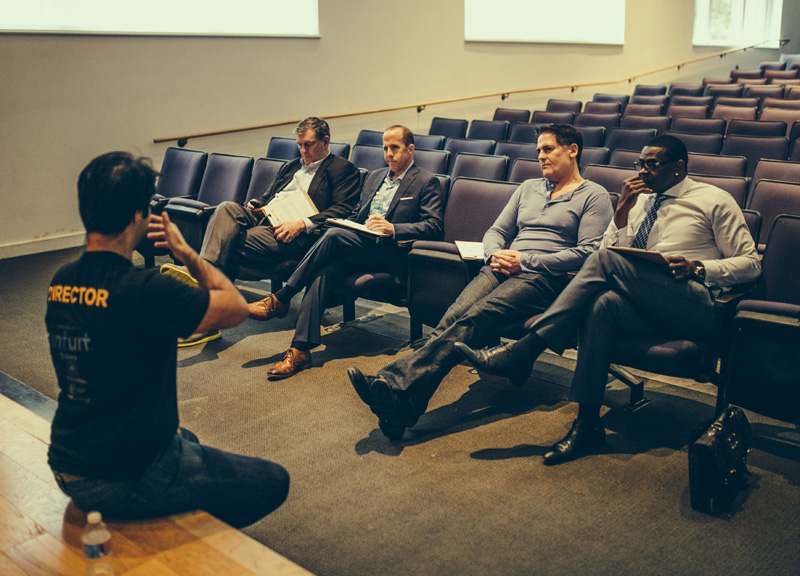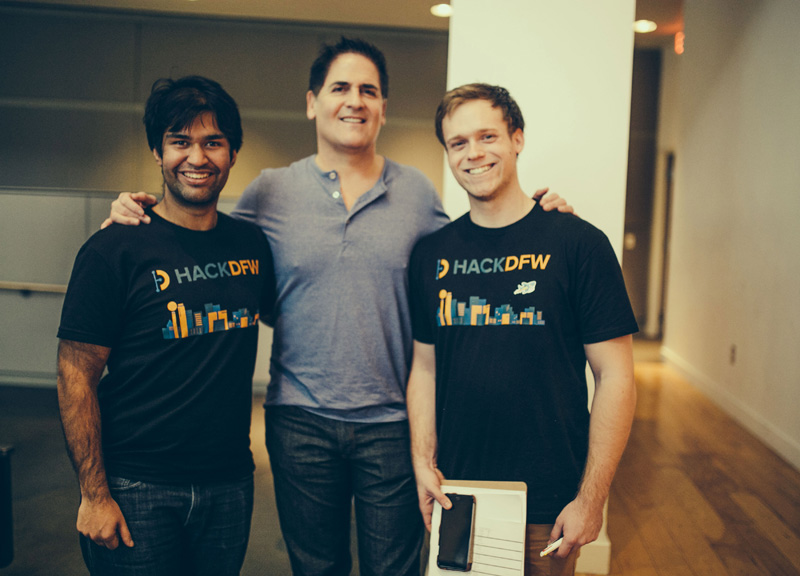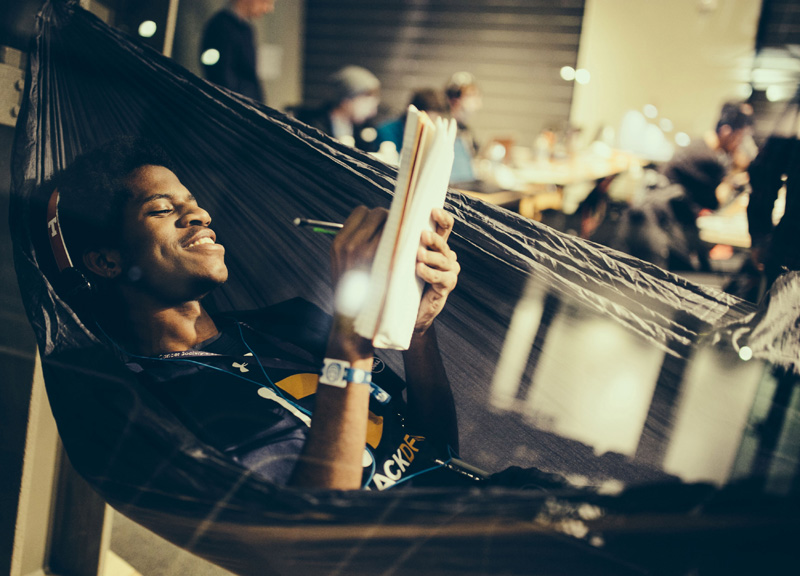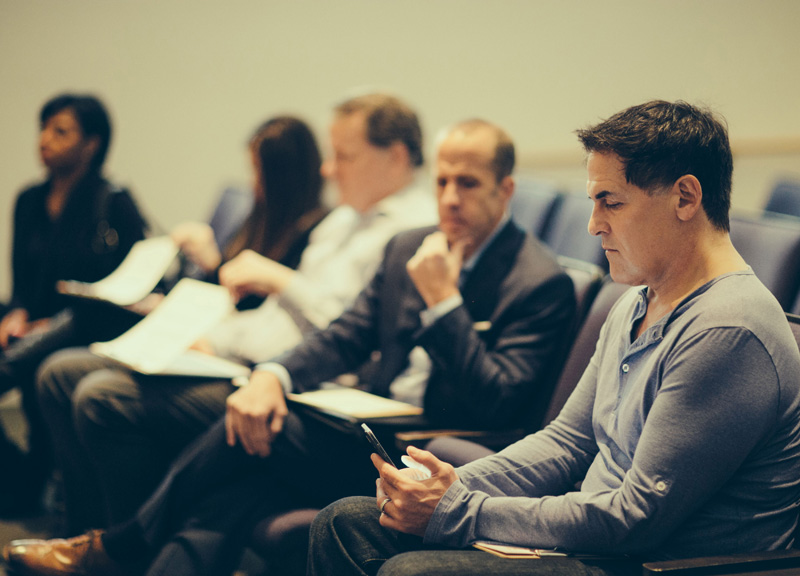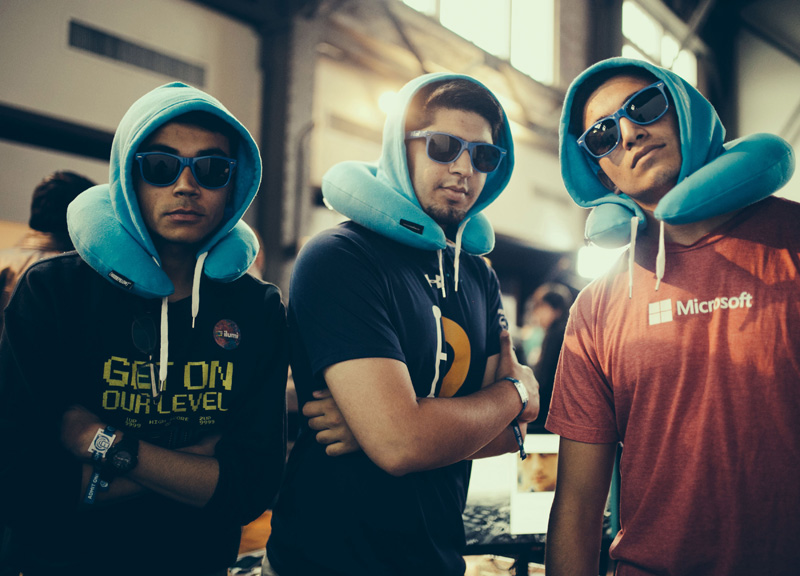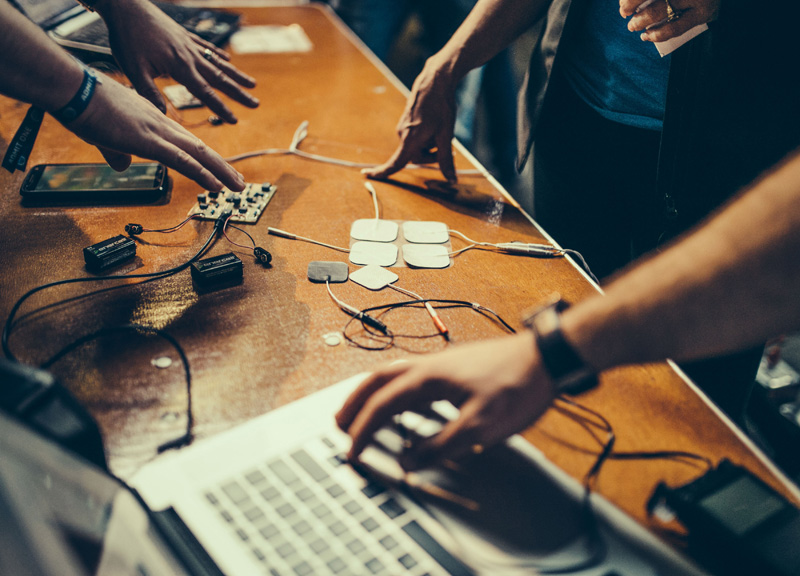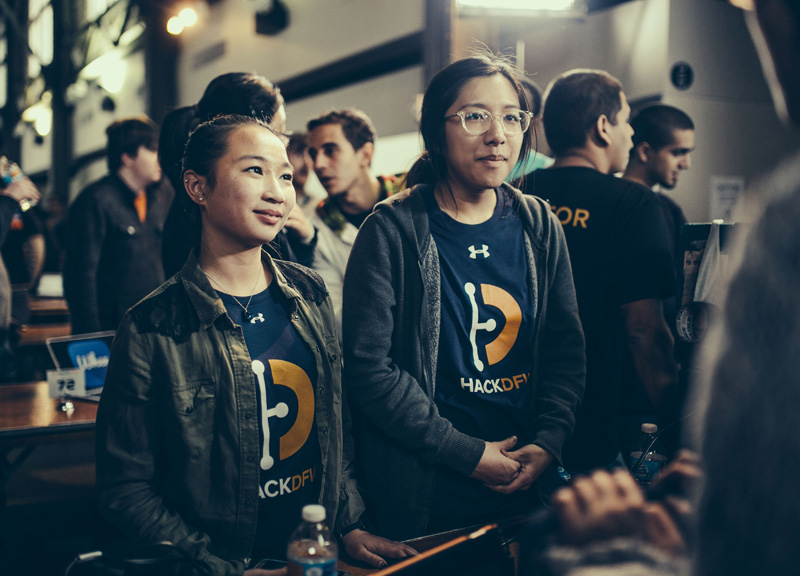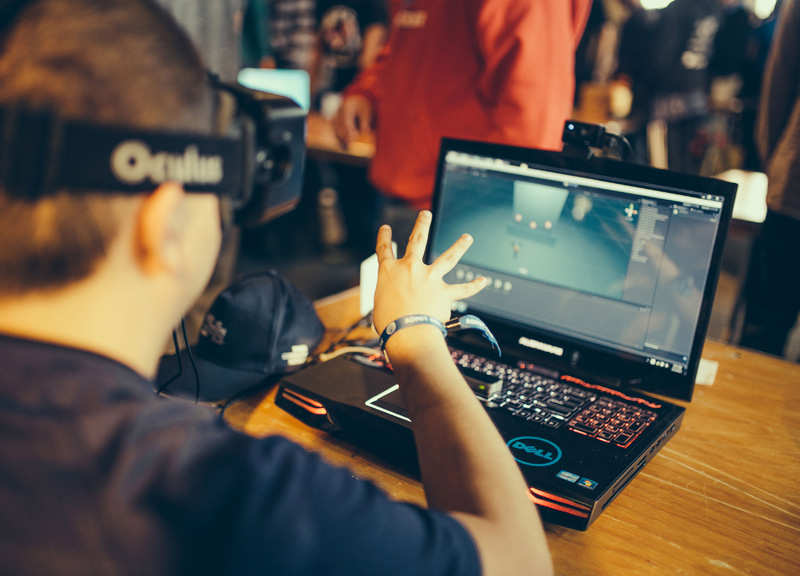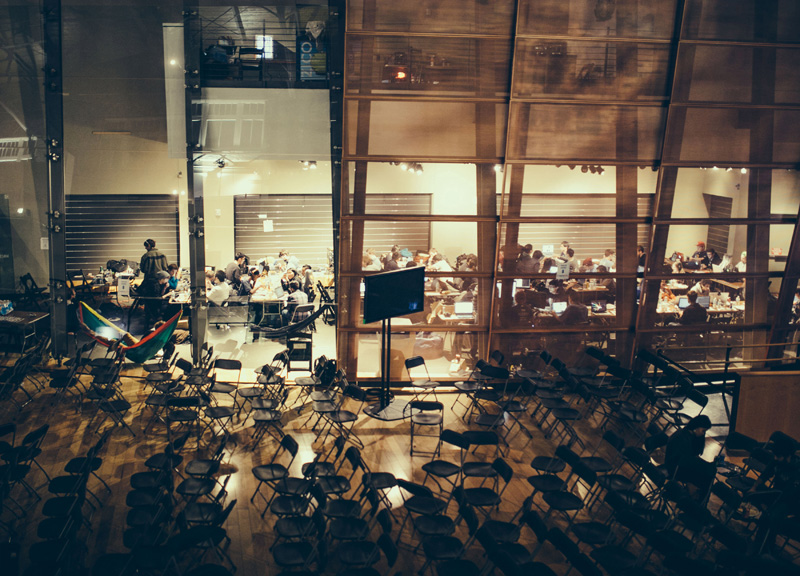Scenes From This Weekend's 24-Hour Hackathon Race In Fair Park.
With innovations such as the computer mouse and the desktop display to his credit, it's well known by now that Steve Jobs helped transform computers into household devices. A good 30 years ahead of his time, Jobs also forever changed the way Americans live, work and interact.
In Fair Park this weekend, 700 young area innovators ranging from high schoolers to graduate students took part in HackDFW's 24-Hour Hackathon event, each hoping to churn out innovations that will one day prove as impactful as Jobs' own.
It was a sight to see, for sure: In other settings, these are the introverted quiet kids that you might miss on campus; here, these participants transformed into something else entirely while forming teams, working through the night and creating forward-thinking prototypes of whatever they could imagine. Over the course of the competition's 24-hour run, approximately 150 teams were formed — some grouped by school and others finding its members paired at random — as these young minds went to work toward the singular goal of creating something cool. And while there was some help to be had — on-site sponsors provided high-tech equipment for teams to check out and/or incorporate into their innovations, and otherwise made themselves available to answer questions and help debug any tech-related problems that arose during the process — it was mostly a showcase all these impressive minds' own.
And it was a slog, too. Teams piled in alongside clusters of equipment placed onto tables spread out across the The Women's Museum at Fair Park's three floors. And, all 24 hours long, these rooms vibrated with the muffle of low-level chatter and the never-ending sounds of keystrokes. It was a calm chaos, really — so much so that it would've been an almost soothing thing to listen in on had the pace of it all not been so quick.
That pace would take its toll eventually. As afternoon transitioned into night, discarded ideas scribbled on crumpled-up pieces of loose-leaf paper could be found all across the grounds. As night turned to morning, exhausted students could be found beneath their work tables, stealing naps where they could and in spite of the contest's clear no-sleeping rule.
Later on Sunday, tired eyes looked on as Dallas Mayor Mike Rawlings advised the rest of the Hackathon's judges — Dallas Mavericks owner Mark Cuban, Dallas Cowboys great Michael Irvin, Verizon Wireless president Michelle Miller, American Airlines CEO Doug Parker and IF Motivated principal Tom Foley — to step outside of the conference room where they'd gathered and to take a look at the students' work. Hours later, seven teams of young “hackers” were chosen as finalists, showcasing the work they crammed into the marathon innovation session at a closing awards ceremony.
For a generation that's often criticized as being selfie-obsessed, “like”-mongering, scroll-aholics, this event seemed to serve as proof that there are uses for modern technology beyond such vapidity, and that these young people are capable of finding them. Among the more-impressive concepts shared? A virtual reality slingshot, a program that translates sign language into speech and an LED system that changes colors based on outside weather conditions. What would eventually be deemed the event's top entry — a creation that so floored Cuban that he excitedly called for Irvin and Rawlings to run over and come check it out — found a group of students combining 3-D animation and Oculus Rift technology to create a virtual reality showcasing both the size of dinosaurs (to scale, even) as well as the progress of their evolution and eventual demise.
Meanwhile, we can't figure out which browser tab this music coming out of our laptop is coming from right now.
Yup, the children are indeed our future.
